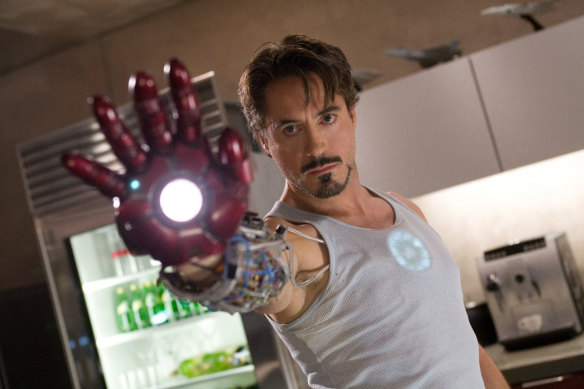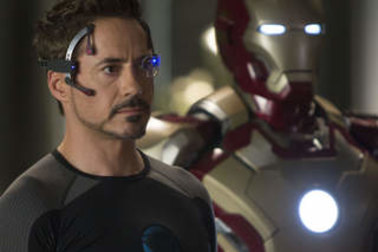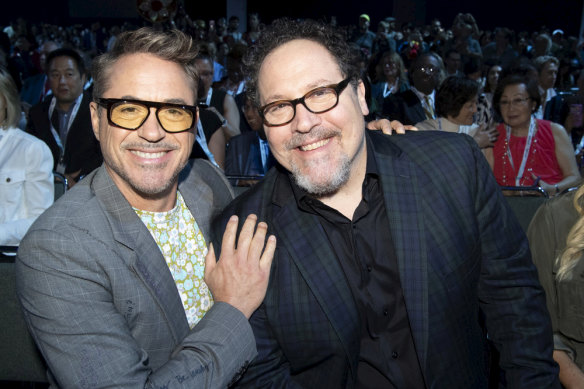How Marvel turned an alcoholic war veteran into a superhero
By Joanna Robinson, Dave Gonzales and Gavin Edwards
Save articles for later
Add articles to your saved list and come back to them any time.
Marvel Studios embarked on the production of its first movie, Iron Man, in 2005. The studio’s leadership was confident it could connect with audiences, even if most people weren’t familiar with Iron Man’s backstory or mythology. The character had been neglected for so long that the only collection of Iron Man comics readily available was Demon In a Bottle, compiling the 1979 run of issues in which Tony Stark succumbed to alcoholism. That confused some of the Hollywood screenwriters who were trying to get up to speed on Stark before meeting with Marvel to pitch their takes on the character.
Even without addiction issues, the character of Tony Stark was a complicated figure: as a billionaire weapons manufacturer, he was the face of the military-industrial complex. “We’re in two wars, Iraq and Afghanistan, and the vice-president [Dick Cheney] was formerly the CEO of Halliburton, the weapons manufacturer,” pointed out Matt Holloway, one of Iron Man’s credited writers. “We’re going to take that kind of guy and make him a hero. How do we do that?”
Tony Stark played by Robert Downey jnr.
Holloway was excited by the opportunity to make Stark relevant in the modern era: “a character with these huge flaws, but with so much potential, and potentially squandered potential, or potential used in the wrong direction.’” Although Marvel briefly considered making the movie a period piece, Holloway and writing partner Art Marcum updated Iron Man’s origin story, moving the location where Stark is captured by foreign soldiers from Vietnam to 21st-century Afghanistan: a simple switch that thrust the movie into the politics of the moment.
While Holloway and Marcum turned out drafts of the Iron Man screenplay, then-Marvel executive vice-president Kevin Feige courted the director he wanted, Jon Favreau. He was most famous for the 1996 indie movie Swingers (which he wrote and starred in opposite Vince Vaughn, but didn’t direct). His biggest hit as a director had been the 2003 Will Ferrell comedy Elf, which is not just a modern Christmas classic but also a movie that grossed $220 million at the box office against a $33 million budget. That success put Favreau on the shortlist for any studio trying to maximise a modest investment (that is, all of them).
Robert Downey jnr in Iron Man 3.
Favreau had maintained a career as both an actor and director, and by appearing in the disappointing 2003 Daredevil as “Foggy” Nelson, he had formed a relationship with then-Marvel CEO Avi Arad. For years, Favreau and Arad had casually kicked around the idea about a comedic take on Captain America, focused on how the innocent 1940s super soldier Steve Rogers would grapple with an unfamiliar modern society. Favreau’s success with a broadly similar story in Elf seemed to make him the obvious choice. But when the darker story of Iron Man was chosen as the first Marvel Studios film, Feige and Marvel exec David Maisel decided Favreau was still the right director for the job.
“Going back to my experience watching Sony and Laura Ziskin and Avi hire Sam [Raimi], or Fox hire Bryan Singer – those were not people who had just come out with a big, giant blockbuster and now were doing their next,” Feige recalled. “They were filmmakers who’d done super-interesting movies on a lesser scale coming into a bigger platform.” From the beginning, Marvel believed in the expansiveness and possibilities of the superhero genre. Picking Favreau meant Marvel was backing a director who prized smaller character moments over big action sequences, but wall-to-wall action might have been too expensive for the incipient studio, anyway.
On Favreau’s first day on the job, as he was beginning the earliest stages of preproduction, he walked into his shabby new Marvel Studios office and wrote one word on a whiteboard: PLAUSIBILITY. He was making a movie about a man who could fly, but he wanted to keep the story as earthbound as possible. Hundreds of ideas about the film came and went on that whiteboard, but that one word always stayed.
Iron Man director Jon Favreau (right) and star Robert Downey jnr in 2019.
For Favreau, the appeal of joining a fledgling independent studio such as Marvel was that as long as he brought in the movie on time and for the expected budget, he would have more freedom than the director of a typical tent-pole movie who needs to manage both the production and a barrage of studio notes. “We were outsiders,” Favreau said of those early, heady days when he operated with minimal corporate oversight.
The Marvel executives were happy to leave him alone, both because they trusted him and because they were busy making sure they could pay the bills: every dollar they could get from foreign sales was money that Marvel wouldn’t have to borrow from its Merrill Lynch line of credit, which it had taken out to build Marvel Studios. “People forget that Iron Man was an independent movie,” Feige later said. “I pitched that movie dozens of times to foreign buyers because we had to get, I don’t remember exactly what the percentage was, but a large percentage of financing it was from pre-selling the foreign rights.”
Favreau brought in two additional screenwriters: Mark Fergus and Hawk Otsby. While all four writers (plus the director) laboured on the script, Favreau and Marvel Studios turned their attention to a crucial issue: which actors would speak all this dialogue.
The first actor to join what would become the Marvel Cinematic Universe was Terrence Howard, who would play Lt Col James “Rhodey” Rhodes, the best friend and conscience of Tony Stark. Not yet known as the leading man of the show Empire, Howard was coming off an Oscar-nominated turn in the movie Hustle & Flow.
“That was a huge get,” Marcum recalled. Howard, a Marvel Comics fan, signed a three-picture deal, knowing that his character could become the superhero War Machine later on. (Howard later left the franchise after a salary dispute and was replaced in future Marvel films by Don Cheadle.)
A bigger task was finding the perfect Stark. “Hollywood likes them to be 26 and cut, but Tony Stark was not a young kid,” Arad said. Ten years earlier, when the Iron Man rights were at 20th Century Fox, Tom Cruise, then 34, had flirted with the idea of playing Stark. According to Feige, however, Cruise’s asking fee at the time was more than even a profitable studio such as Fox was willing to risk on an untested superhero property.
Marvel Studios couldn’t afford actors who were at the top of the A-list such as Johnny Depp, star of the blockbuster Pirates of the Caribbean franchise, or Cruise. Several lesser-known candidates surfaced. One was the 38-year-old Jim Caviezel, best known for playing the title role in The Passion of the Christ, who had declined the role of Cyclops in X-Men several years before.
It was 38-year-old Timothy Olyphant’s grimly conflicted turn as Sheriff Seth Bullock on HBO’s Deadwood that made him “the one everyone was rooting for”, according to one Marvel insider. Favreau had one other name in mind: Sam Rockwell, also 38, a character actor then best known for his leading turn in George Clooney’s antic movie Confessions of a Dangerous Mind. But that was before Favreau met with Robert Downey Jr.
This is an extract from MCU: The Reign of Marvel Studios (Hachette, $34.99).
Find out the next TV, streaming series and movies to add to your must-sees. Get The Watchlist delivered every Thursday.
Most Viewed in Culture
Source: Read Full Article


